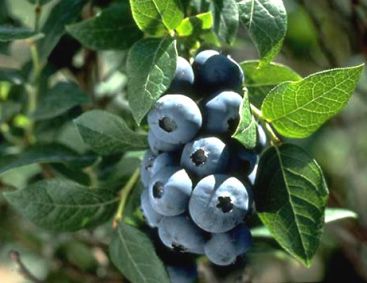Blueberry Growing Basics – Northsky Blueberry, Polaris Blueberry
Are you curious about blueberry growing basics? In this article, we provide tried and true tips for growing the Northsky Blueberry, Polaris Blueberry, and more.
These hardy plants produce classic, dark, sweet berries and are also well suited for use as ornamental landscape shrubs. They need acidic soil, full sun and ample moisture to bear fruit. They produce small, pink, bell-like flowers in spring and have glowing colors of orange in the fall. Extra protection in the winter may help to increase plant yields the following season.
We carry several different varieties here at Gertens: Northblue, Chippewa, Northcountry, Northland, Patriot, and Polaris.
#1. The most important element for growing delicious Blueberries is the
SOIL:
- Acidic, with a pH of 4-5
- Well drained
Blueberries need acidic soils with a pH range of 4-5. If the pH level is too high the plants will slowly die. When soils have an original pH of 7, amending the soil to 4-5 pH is possible.
Amending soils for correcting pH levels
Soils must be prepared before planting blueberries. To lower the pH value of the soil, use a soil acidifying fertilizer such as Gertens Acid Loving Controlled Release Plant Food as the package directs. The University of Minnesota advises not to use aluminum sulfate because it is too hard on the roots of blueberries. For continuous maintenance of the acidity level, pine needles and peat moss can be used as mulches to help keep the pH level where it needs to be.
Amending soil for drainage
Soils must be well drained; clays soils are not suitable for growing blueberries.
Clay soils can be amended by adding 6-8 inches of course organic matter such as leaves, or compost into the top 6-12 inches of soil.
If soil or locations are unsuitable, the shallow root system of blueberries allows for them to be grown in raised beds.
#2. More than one variety of blueberry plant is needed for pollination.
For best fruit set plant two or more varieties for cross-pollination.
#3. De-flower plants for the first two years
To maximize the fruit crop, remove the flowers for the first two years to allow the plant to fully develop before fruit production begins. If the plants are not de-flowered for the first two years, fruit production will always be less than satisfactory.
#4. Full sun light and ample moisture – blueberries need 6 to 8 hours of sun per day.
